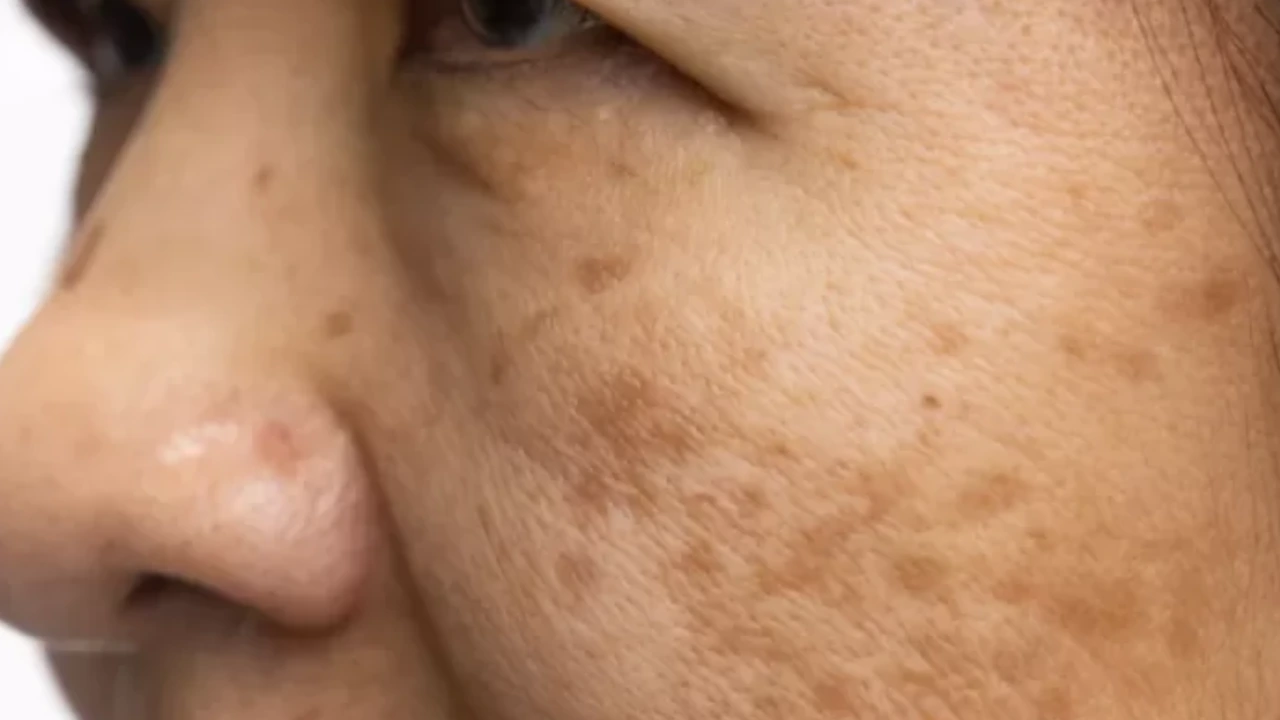Actinic keratosis is a rough, thickened, and scaly skin condition due to exposure to sunlight for a long time. Actinic keratosis, also known as solar keratosis, can also occur due to the use of tanning tools to blacken the skin .
Solar keratosis is generally experienced by people over the age of 40 and people who are often active in the sun for a long time. Actinic keratosis develops slowly and does not cause symptoms. Although rare, this condition has the potential to cause skin cancer .
Causes of Actinic Keratosis
The main cause of actinic keratosis is excessive exposure to sunlight or ultraviolet rays. In other words, solar keratosis will occur more in people who are often active under direct sunlight, as well as people who like to use tanning beds or skin tanning devices .
Actinic keratosis risk factors
Actinic keratosis can attack anyone. Even so, a person is more at risk of being affected by the condition if:
- Aged more than 40 years
- Stay in a place exposed to sunlight
- Have a sensitive skin type
- Having a weak immune system, for example due to suffering from cancer , HIV/AIDS, or using chemotherapy drugs and immunosuppressant drugs
Symptoms of Actinic Keratosis
The symptoms of actinic keratosis generally appear in areas of the skin that are often exposed to sunlight. However, not everyone who is often exposed to the sun will suffer from actinic keratosis.
If it appears, the changes that can occur in the affected skin area are:
- The skin is rough and thickened , it can even become like a wart
- Scaly skin
- The skin changes color to reddish or brown
- The skin feels itchy or hot
These skin disorders usually occur on the temples, forehead, scalp, face, lips, ears, neck, arms, and back of the hands. Generally, the area that experiences abnormalities due to solar keratosis is 2.5 cm or smaller in diameter.
When should you go to the doctor
Immediately check with a doctor if you experience changes in the skin. Sufferers of actinic keratosis are also recommended to see a doctor immediately if they experience symptoms that need to be watched out for, such as:
- An unusual growth of tissue on the surface of the skin.
- A lump or new skin tissue appears on the surface of the skin that increases in size and feels painful or bleeds
- Have had actinic keratosis before, and it looks like there are new spots on the skin
Diagnosis of Actinic Keratosis
First of all, the doctor will ask about the symptoms experienced by the patient. Next, the doctor will perform a physical examination while paying attention to areas of the skin that have abnormalities.
If there are suspected symptoms due to other causes, the dermatologist will perform a supporting examination in the form of:
- Dermoscopy, which is examination of the surface of the skin and abnormalities in the skin using a magnifying microscope ( dermatoscope )
- Biopsy , which is the taking of tissue samples from the patient’s skin for further examination in the laboratory
Treatment of Actinic Keratosis
Actinic keratosis generally recovers on its own. Doctors usually simply recommend patients to use sunscreen and moisturizer, so that their skin condition does not get worse. This effort also aims to prevent recurrence if the skin is exposed to the sun continuously.
In certain cases, actinic keratosis needs to be treated with drugs, specific therapy, and surgery. The type of treatment is determined based on the amount of solar keratosis experienced, its thickness and location, as well as the patient’s overall health condition.
The following is an explanation of the treatment method:
Medicines
Medicines are used if there is a lot of actinic keratosis on the surface of the skin. The medicine given is a topical medicine (oles) in the form of a cream or gel, such as:
- Nonsteroidal anti-inflammatory gels (NSAIDs)
- Fluorouracil cream
- Salicylic acid ointment
- Imiquimod cream
Photodynamic Therapy (PDT)
In this procedure, the doctor will apply chemicals to the problem skin. After that, the doctor will use a special lamp to destroy actinic keratosis.
It should be known that this therapy can cause side effects on the skin, in the form of redness, swelling, and a burning sensation.
Cryotherapy
In this procedure, the doctor will use liquid nitrogen to freeze and lift the actinic keratosis.
Cryotherapy can cause infection, blisters, and changes in skin texture and color in areas affected by solar keratitis.
Operation
In severe cases, scraping surgery will be recommended by the doctor as a solution to remove damaged skin cells. Initially, the doctor will inject a local anesthetic into the patient, then scrape off the damaged cells on the surface of the skin using a curette.
The operation will be continued with electrosurgery , which aims to kill tissue in the body that is infected using electric current. This operation can cause side effects in the form of infection, skin blisters, and changes in the structure of the skin in the operated area.
Complications of Actinic Keratosis
If the treatment has been done correctly, solar keratosis rarely causes complications. However, in certain cases, keratosis solar spots can turn into squamous cell carcinoma.
Squamous cell cancer is a non-life-threatening skin cancer. However, this cancer can spread to other tissues and organs of the body if not treated properly.
Prevention of Actinic Keratosis
Personal protection from UV rays is very important to prevent the development and recurrence of actinic keratosis. If you are often active in the sun, it is highly recommended to do the following preventative measures:
- Use sunscreen that is water-resistant and contains SPF 30 and apply evenly on parts of the body that are often exposed to sunlight.
- Limit activities under direct sunlight between 10 am and 3 pm, because the ultraviolet rays emitted are very high.
- Protect skin from sun exposure with long-sleeved clothing, long pants, socks, closed-toe shoes, jackets, and hats.
- Avoid using tanning beds. The tanning device can emit ultraviolet rays and radiation that can damage the skin.
- Do regular skin checks if your skin is problematic so that it can be dealt with immediately if symptoms of solar keratosis are detected.
Source :
de Oliveira, E. et al. (2019). Actinic Keratosis - Review for Clinical Practice. International Journal of Dermatology, 58(4), pp. 400–7.
Reinehr, C. & Bakos, R. (2019). Actinic Keratoses: Review of Clinical, Dermoscopic, and Therapeutic Aspects. Anais Brasileiros de Dermatology, 94(6), pp. 637–57.
Dermnet New Zealand (2019). Actinic Keratosis Dermoscopy.
Skin Cancer Foundation (2022). Actinic Keratosis.
UK National Health Service (2020). Health A to Z. Actinic Keratoses (Solar Keratoses).
Mayo Clinic (2021). Diseases & Conditions. Actinic Keratosis.
Mayo Clinic (2021). Diseases & Conditions. Squamous Cell Carcinoma of the Skin.
Gray, D. Healthline (2018). A Visual Exam May Not Be Enough for Skin Cancer Check.

